Intel Core i7-1065G7 Benchmarked: Ice Lake with Iris Plus Graphics
This has been a long time coming, as nosotros're finally getting around to testing Intel'south Ice Lake compages. This is Intel's first real attempt at a 10nm CPU, and in this review nosotros'll be comparing it against their 14nm offerings to see how it stacks up in terms of performance.
Final twelvemonth nosotros did meet the 10nm 'Cannon Lake' simply it was a single processor, the Core i3-8121U, a measly dual-core clocked at upwardly to three.ii GHz with no integrated graphics. It was used in a single Lenovo laptop plus a small scattering of NUCs. Because of its low-end specs, it never saw much traction.
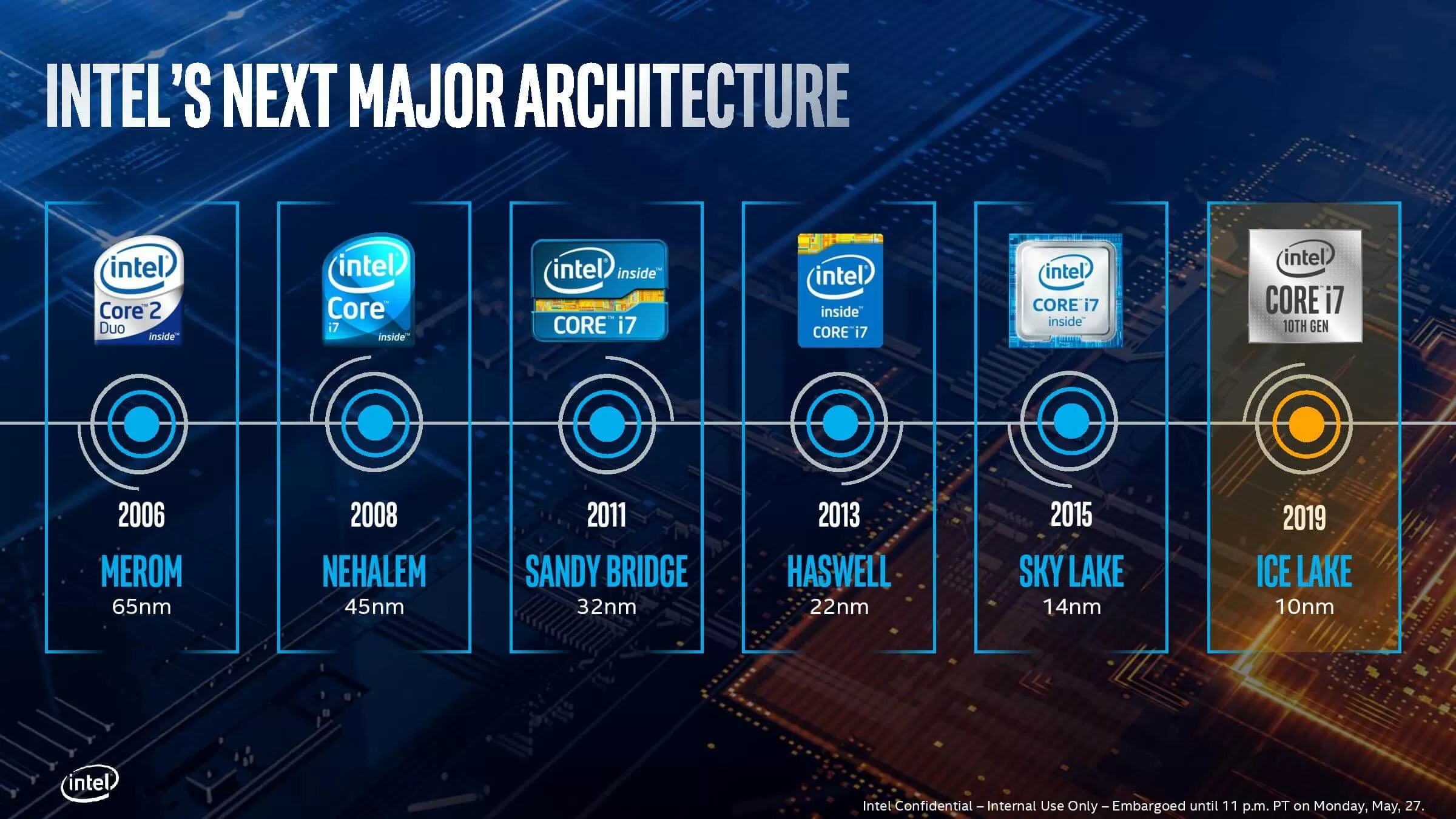
Thus in our book Ice Lake is Intel's first true entry to the CPU market with the 10nm procedure. There are many more than SKUs available and we're already seeing decent uptake in the market place beyond ultraportable laptops. Instead of 1 CPU, there are 11 in Intel'south Ice Lake line-up, beyond 9W, 15W and 28W power categories. These are all designed for low-power ultraportables and other mobile devices, at least for now.
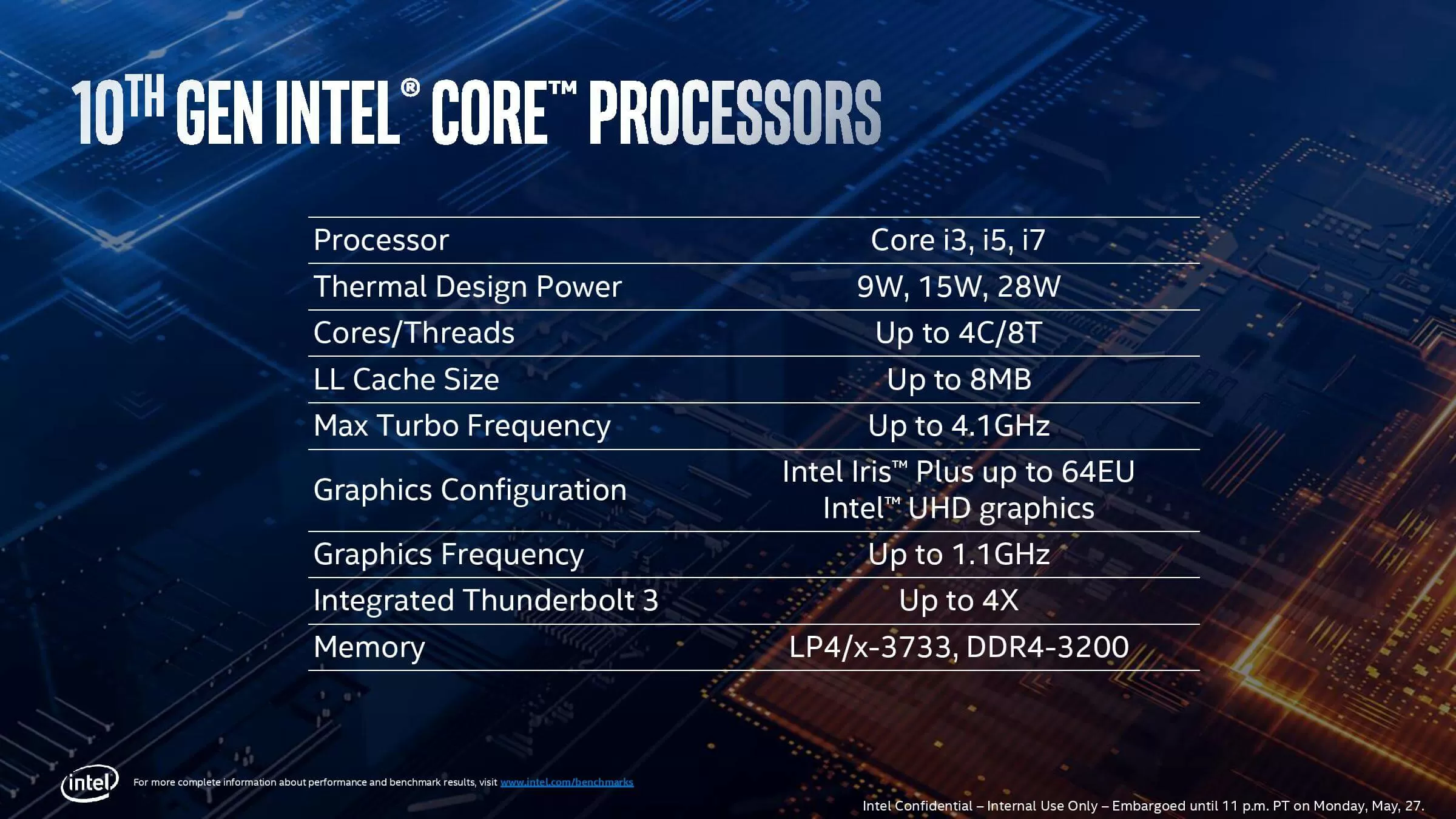
Intel'southward naming scheme is confusing equally usual. Before Intel used U suffixes to denote 15W products, and Y to announce 9W. At present this is relegated to a single number: the 1065G7 for example is a 15W CPU, while the 1060G7 is 9W. All 15W products get a 5 in the 4th digit, and 9W parts go a 0. I personally preferred the utilise of U or Y, that was clearer for buyers rather than hiding this crucial functioning indicator amongst a bunch of other letters and numbers.
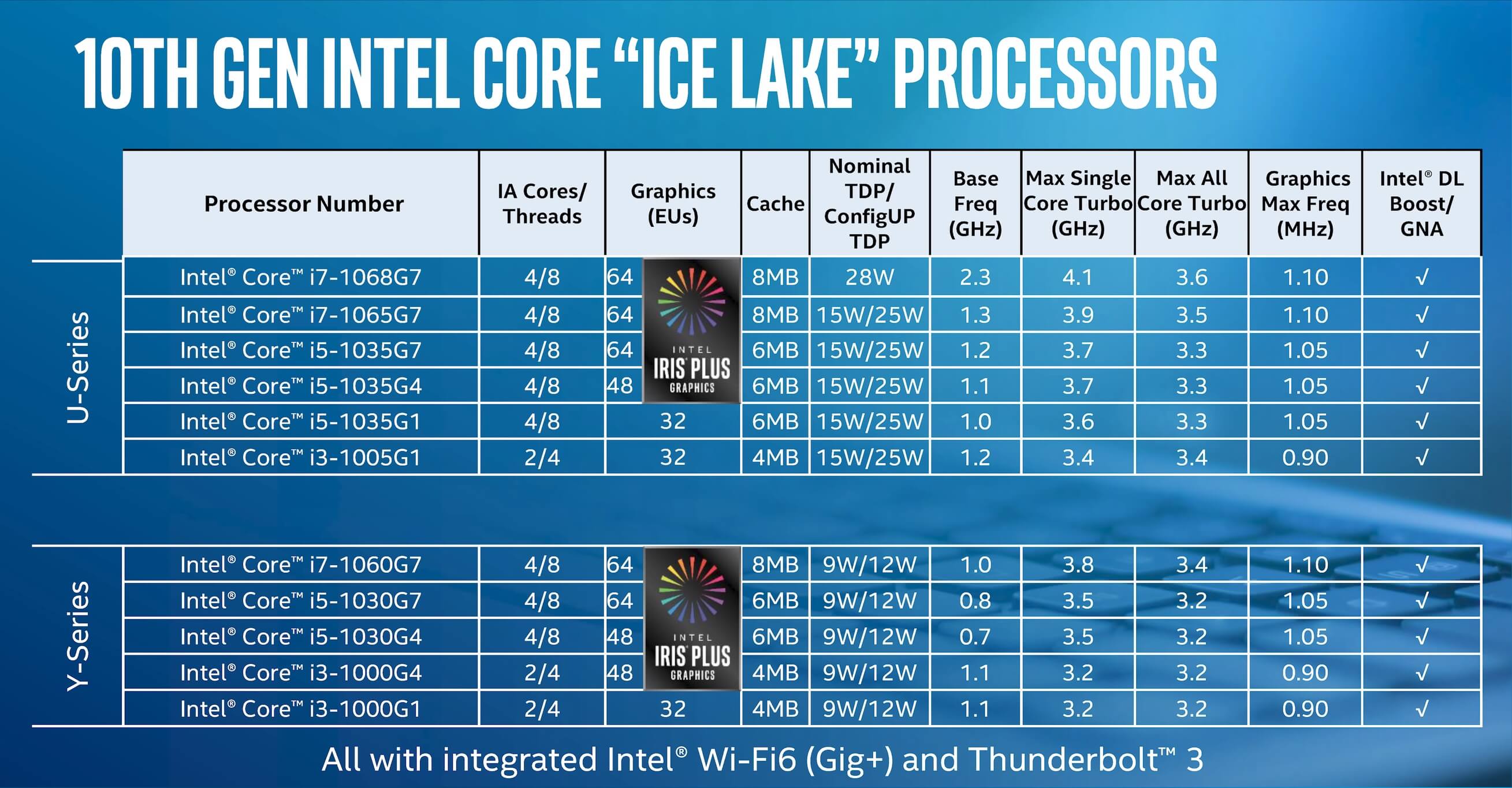
What has become clearer this generation though, is the integrated graphics capabilities. The G suffix tells us exactly what sort of CPU configuration nosotros're getting: G7 denotes Iris Plus with the full 64 execution units unlocked, G4 is Iris Plus cut down to 48 EUs, and and then G1 gives u.s.a. UHD graphics with 32 EUs. All utilize Intel's new Gen eleven GPU, which is one of the bigger changes to Water ice Lake compared to previous 14nm generations.
And it's a much needed change. Since Skylake was introduced, 15W CPUs have largely been stuck with GPUs that pack only 24 execution units with an architecture from 2022, and that continues to exist the case with 2022's 14nm refresh codenamed Comet Lake. Some 28W parts would push this up to 48 execution units, simply that was generally the maximum you could discover.
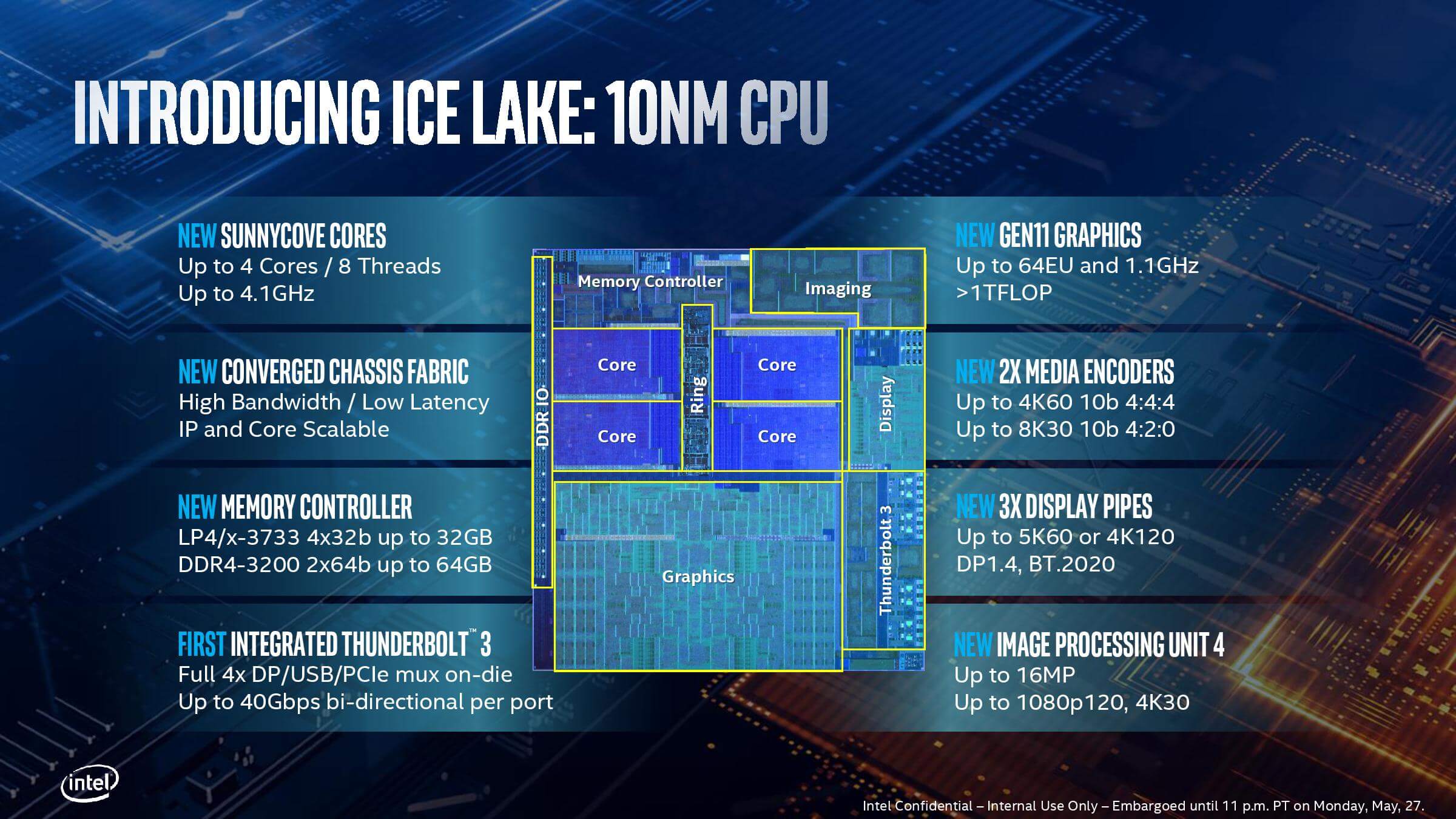
Now, the base of operations G1 tier includes 32 EUs, so we're already seeing a 33% increment to cadre count (if you desire to telephone call execution units "cores"). And the peak finish also gets a crash-land, but crucially you lot can all the same find 64 EU G7 graphics inside a 15W power envelope, so Intel is bringing a meaning jump to graphics capabilities within the existing TDP, assuasive it to meliorate compete with the beefy graphics AMD provides in Ryzen Mobile.
On elevation of this, Gen11 graphics provide a number of architectural changes, including support for variable charge per unit shading, adaptive sync, display stream compression, and a faster media encoder. This really is the primal benefit to getting Ice Lake over previous generations.
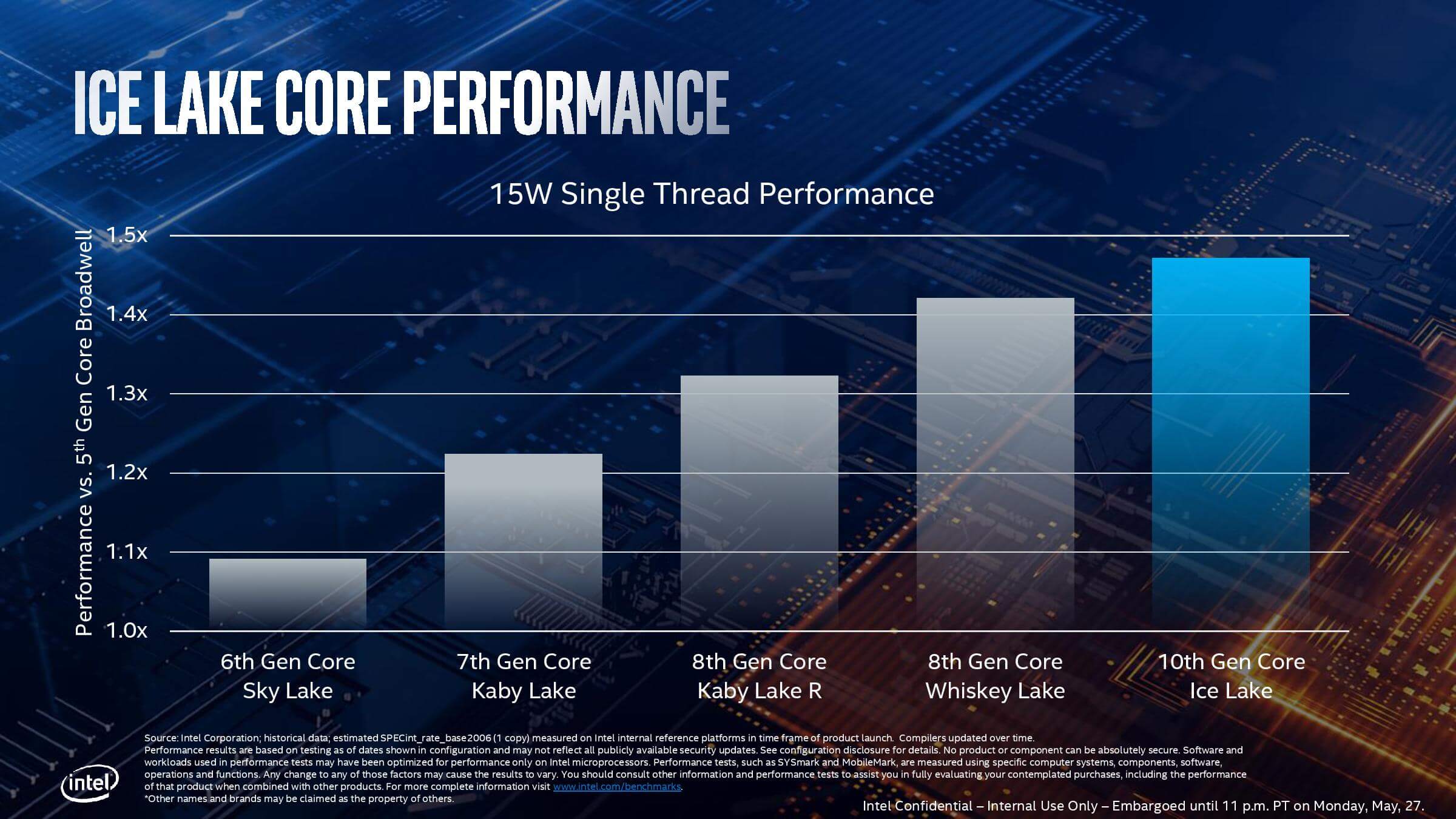
There are also significant changes on the CPU front, thank you to an all-new CPU core in Sunny Cove. Intel is promising an 18% IPC increase over Skylake, back up for AVX-512, new dynamic tuning capabilities, and a much better memory controller that supports DDR4-3200 and LPDDR4X-3733 speeds.
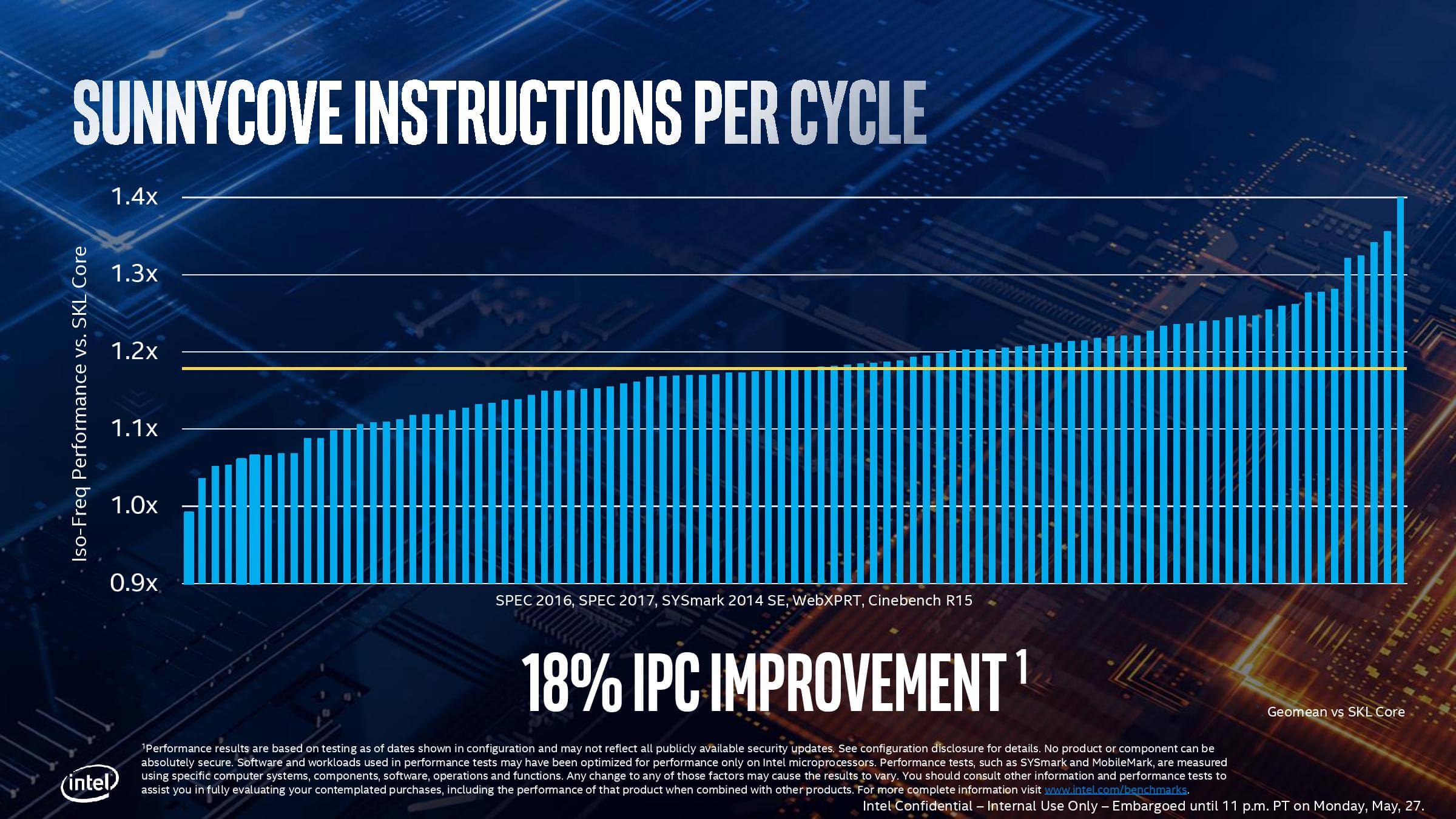
While IPC has seen a big increase (according to Intel), this has been starting time by lower clock speeds across the Ice Lake line. Take the flagship 15W part that nosotros're looking at today: the Cadre i7-1065G7. It gets the full 64 execution unit of measurement experience, giving us all the benefits of Gen11 graphics. Merely it only packs 4 Sunny Cove CPU cores with a base of operations clock of ane.3 GHz, a single-cadre turbo of iii.9 GHz and an all-core speed of 3.5 GHz.
This is well below what y'all get with Intel's other current-generation CPU, Comet Lake. The top-end Comet Lake fleck built on 14nm offers a worse integrated graphics, but bumps up the CPU to 6 cores, clocked at one.1 GHz base of operations, 4.7 GHz single-core turbo, and iv.1 GHz all cadre. Alternatively you tin get a Core i7 quad-core with a 1.8 GHz base of operations and iv.3 GHz all-cadre turbo.
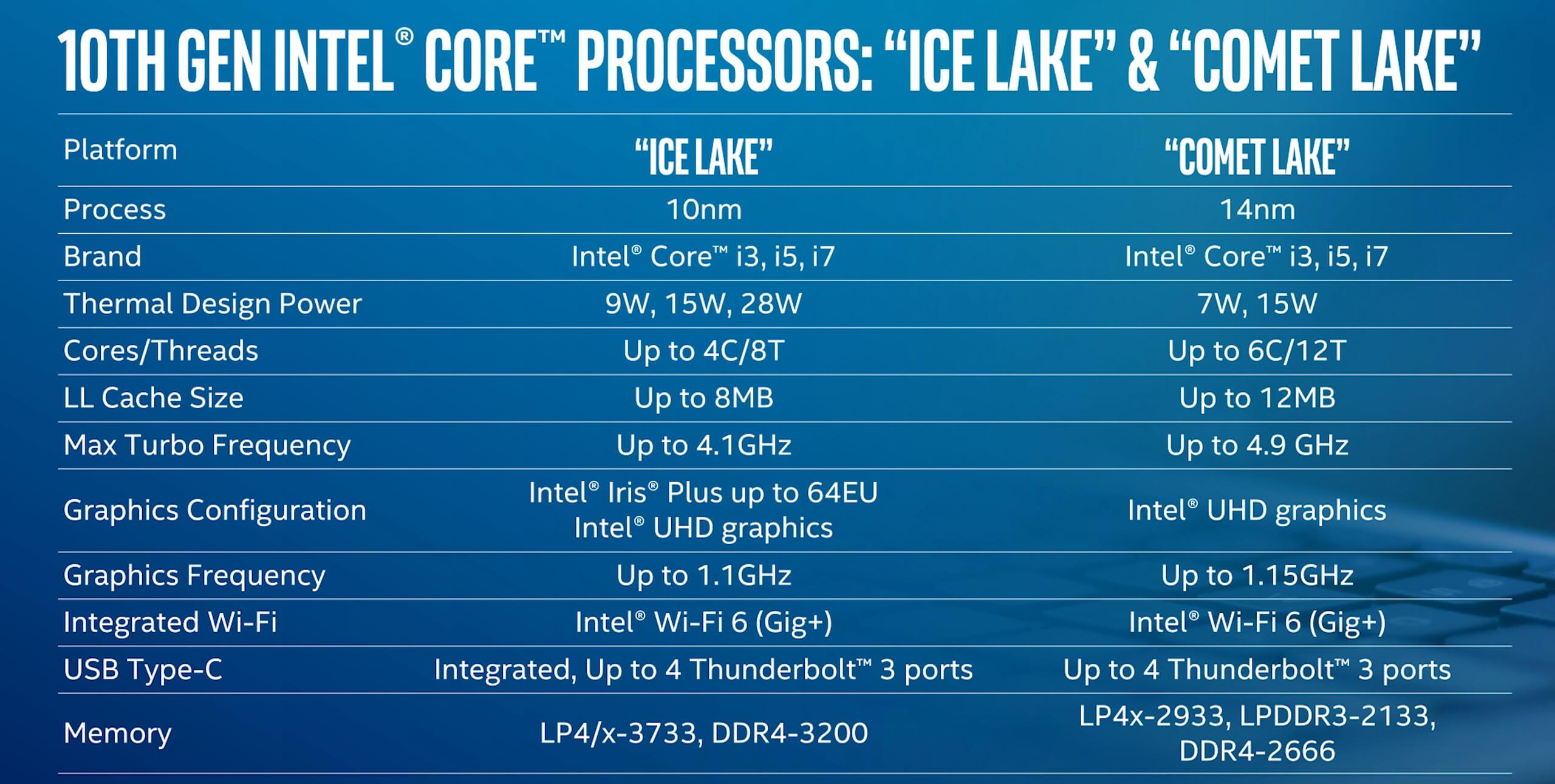
While these 15W parts mostly don't run at the advertised clock speeds in sustained workloads, even comparing simply these rated frequencies shows a massive discrepancy. Base clocks comparing quad core to quad cadre are almost 40% college for Comet Lake, although this narrows to 23% comparing all-core turbos. Merely with Ice Lake only receiving an 18% boilerplate gain to IPC, you lot can already see that information technology is probably going to struggle to outperform what Intel already has on 14nm in CPU workloads.
And again, this whole situation with Intel having both 10nm Ice Lake and 14nm Comet Lake on the market at the aforementioned time as part of their tenth generation merely serves to misfile customers. With Comet Lake boasting a beefier CPU and Ice Lake taking the GPU crown, regular everyday Joes will take to do even more than research than ever before to ensure what they are getting is the right product for their use example.
And with product names like Cadre i7-10710U and Core i7-1065G7, which chip is better and in what areas is so murky I can't encounter how anyone other than a hardcore enthusiast will truly know what they are getting. I feel like regular consumers know the old "college number is better" trick, only with these names, that sort of deduction is impossible.
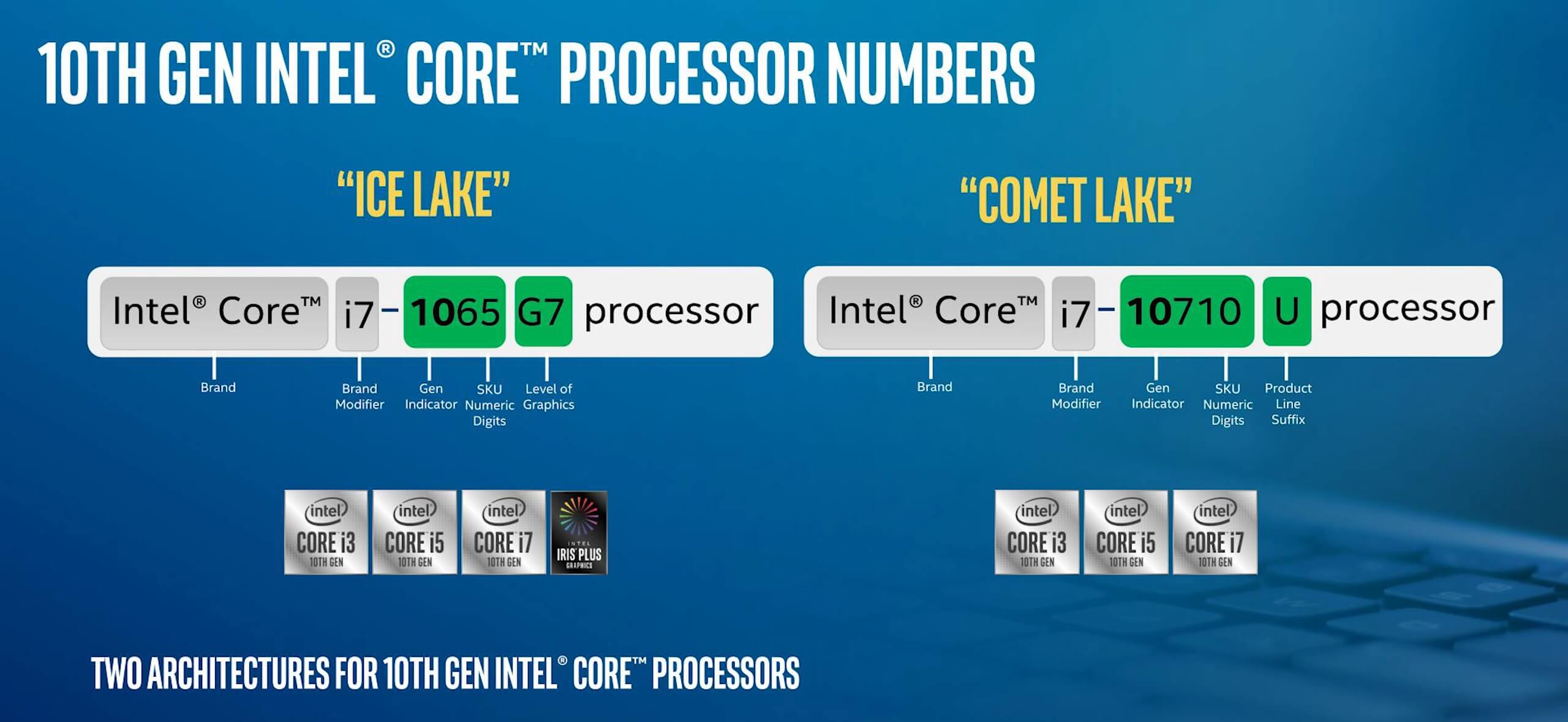
So that's the baseline knowledge yous need about Ice Lake to boot off this operation review...
Today nosotros're focusing on the summit-end Core i7-1065G7, a quad-core CPU with G7 graphics. This review will be discussing everything yous need to know about productivity and compute operation, we'll be comparing Water ice Lake to previous 14nm parts, but gaming is something nosotros'll be tackling in a separate article.
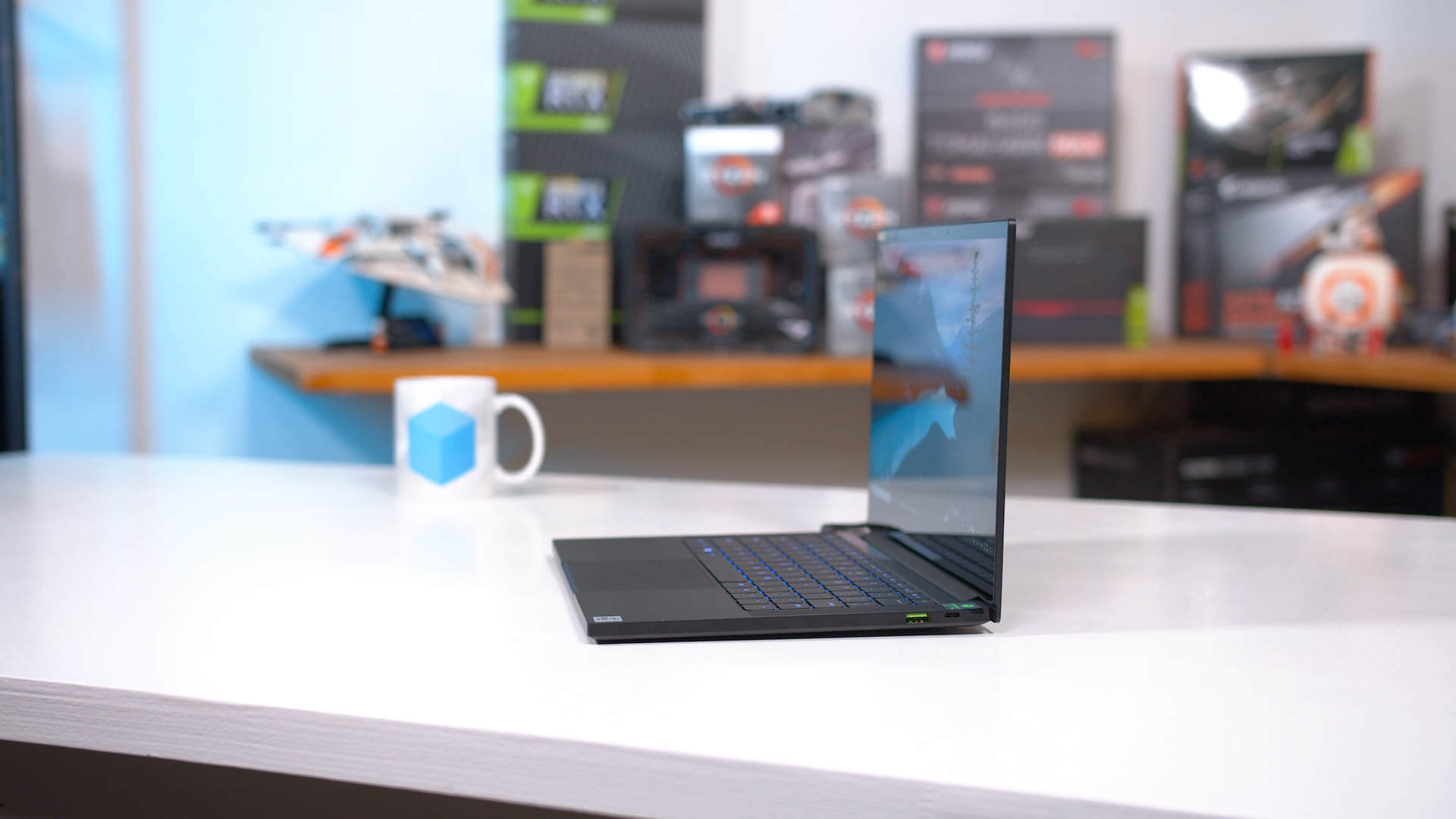
The laptop we have for testing with Ice Lake inside is the new Razer Blade Stealth, a laptop design that nosotros really like with its super sleek metallic design and loftier-stop components. It also tends to provide a actually great test platform – the CPU inside this creature can be configured at both its standard 15W TDP, or at a higher 25W TDP, giving united states useful data for both. It besides packs dual-channel memory at the maximum LPDDR4X-3733 speeds, so we're getting the full retentivity bandwidth improvements of Ice Lake in this test system, too, which is ideal.

The laptop likewise includes a detached GPU, Nvidia's GeForce GTX 1650 Max-Q. For most tests, this GPU has been disabled so we can focus on the compute performance of the new integrated Gen11 graphics, merely in some cases it'due south also enabled. We have exam data from an MSI Prestige 14 which packs the 6-core i7-10710U and GTX 1650 Max-Q, so we can also go a decent look at whether Ice Lake or Comet Lake is better when a more powerful discrete GPU is thrown into the picture.
Benchmarks
We're going to kick things off hither as usual with a look at Cinebench R20, which gives united states of america that all important expect at multi and unmarried threaded performance. The results for Ice Lake and 10nm are quite disappointing but not entirely unexpected given the lower clock speeds this CPU is able to run at. The Core i7-1065G7 sits among the Core i5-10210U and Core i7-8565U towards the lesser of the charts. These are all quad-core CPUs operating at 15W, there clearly isn't much to be gained hither moving from 14nm to 10nm in this power envelope.

The new Cadre i7-10710U with six cores demolishes the Core i7-1065G7 in multi-threaded performance here: the 10710U is a proficient 32 percent faster. However, the 1065G7 does very well with single-threaded performance, outperforming most other CPUs in this table, which bodes well for Ice Lake in other unmarried-threaded benchmarks.
When bumping the 1065G7 up to 25W, only then is information technology able to outperform the 10710U in its 15W configuration, but when both chips are operating at the same TDP, the six-core selection is still far superior.

Looking at clock speeds, there aren't too many surprises given our rated clock speed discussion before. Like all 15W CPUs, under a sustained Cinebench run, clock speeds are well below the maximum all-cadre turbo frequency and so power consumption doesn't exceed 15W. The 14nm Cadre i5-10210U sits between 2.two and ii.3 GHz all-cadre in this run, while the 10nm Cadre i7-1065G7 drops downwards to 1.8 to one.ix GHz.
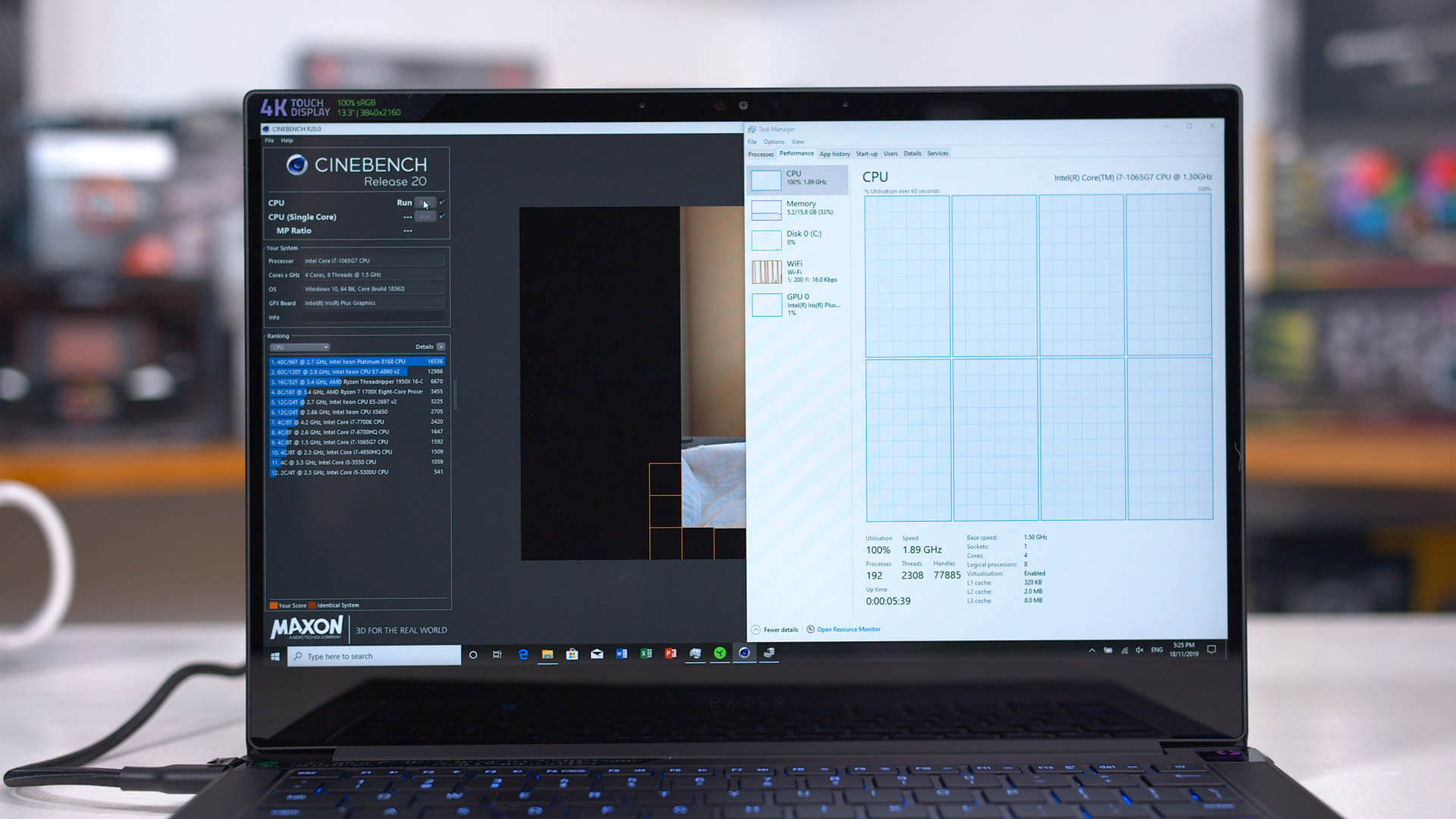
All iii of these CPUs score roughly the same in this criterion, simply the 14nm chips demand to be clocked around 22 percent college. This ends up existence quite similar to the departure in rated heave clocks we saw earlier, which was 23 percent, and likewise similar to Intel's IPC comeback claims for Ice Lake, at an xviii pct average.
The downside is that while Ice Lake is able to do more per clock and perform as well equally 14nm parts, there is no cloth improvement to efficiency. This is pretty concerning for a new procedure, although it too speaks volumes about what Intel has been able to do with 14nm and its continual refinements. After all, this is 10nm up against 14nm++++, and those pluses practise make a small difference with these mobile parts.
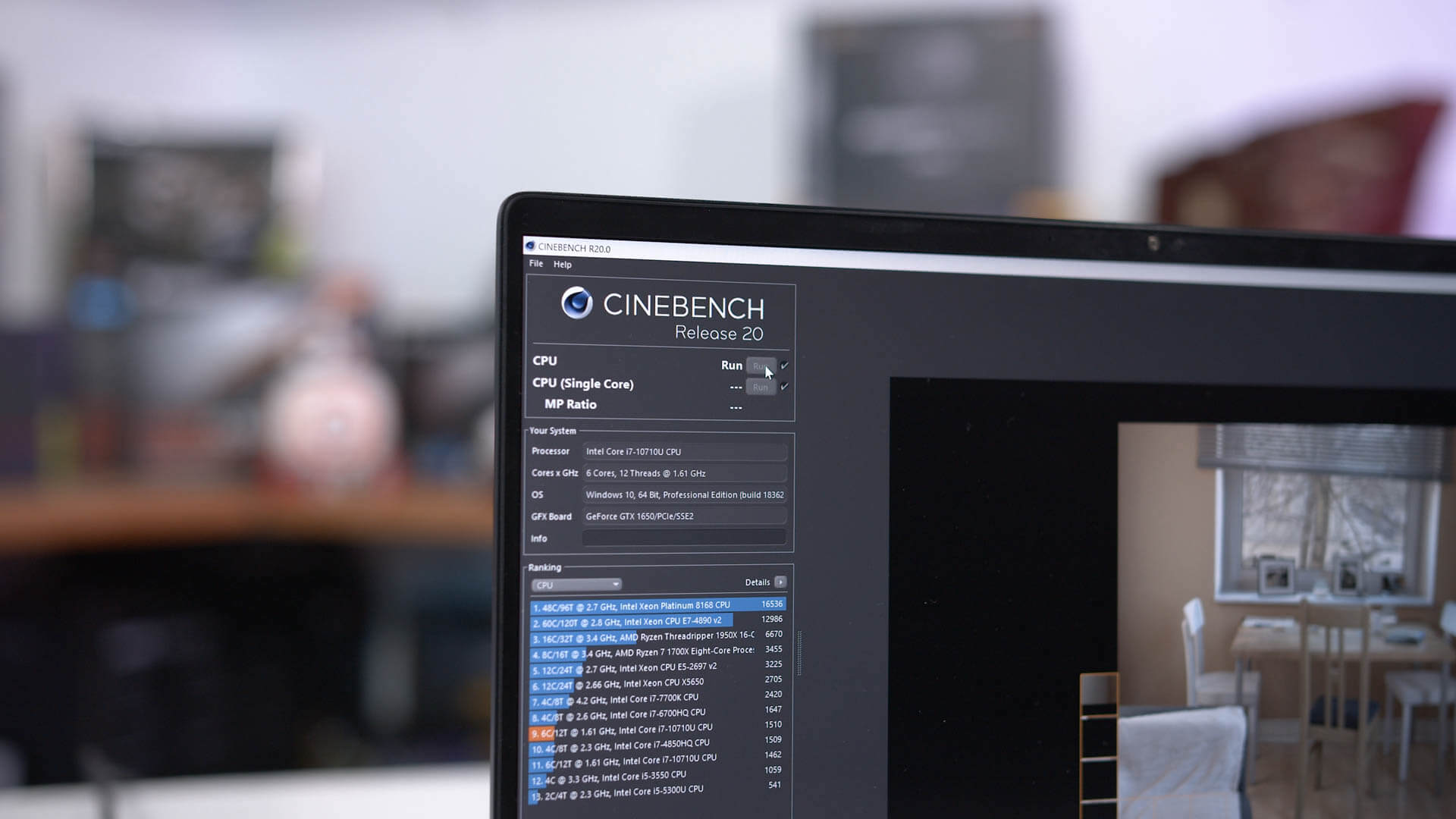
For those thinking about a desktop Ice Lake processor, if nosotros got perfect scaling with Cinebench R20 results, Intel would exist able to make a 4.0 GHz 10nm CPU run like a 4.8 GHz 14nm CPU. But in that location are many question marks here: tin can Intel become Ice Lake running at 4.0 GHz all-cadre, peculiarly over what would demand to be 8 cores? Given heave clocks for mobile parts, that seems like it might be tricky. Would information technology even be as efficient at these frequencies? Would it improve operation?
We'll have to wait for desktop 10nm parts to go answers to those questions simply yous can encounter why Intel is sticking with 14nm on the desktop for now.
Let'south look at some more than benchmarks. Cinebench R15 has the 1065G7 slightly ahead of the Core i5 and Core i7 14nm models nosotros've just been talking about, merely there's no significant gains to be fabricated compared to the 10710U with its six cores: the 1065G7 is still 24 percent slower. Unmarried thread operation is very good as we saw previously.

Handbrake is where the boys become separated from the men, as this multiple hr long benchmark actually stresses the long term steady state performance of these fries. Again, when constrained to 15W, there's really no reward to CPU performance here over previous generation parts. We're nigh 23 percent slower than the 10710U, while the higher clocked Core i7-8565U really outperforms the 1065G7 past a few minutes.

Very like story with x264 encoding, although this time the 1065G7 is marginally slower than 14nm equivalents such as the Cadre i5-10210U. In anything multi-threaded similar this there just aren't many gains to be had from Intel'south 10nm process.

Information technology'due south not all bad for Water ice Lake though. Single-threaded performance is very strong, and here looking at a unmarried instance of Premiere's Warp Stabilizer effect we tin see that the 1065G7 is at least 8 percentage faster than last-gen 14nm CPUs, and 12 percent faster than Intel's lower clocked 10710U. We saw hints of that in Cinebench but here we tin see the textile difference, with Water ice Lake shaving a minute off this workload.

What almost another good consequence for Ice Lake? In Adobe Photoshop's Iris Mistiness filter we see strong performance out of the Core i7-1065G7. This CPU is 8 percent faster than the 10710U and 17 per centum faster than the 10510U, which is a really strong showing. While this isn't a single-threaded examination, it's quite memory intensive given the size of the photo we're working with, so I believe we're seeing good gains from the massive improvement to memory bandwidth nosotros get cheers to Ice Lake's new memory controller.

Only when we move back to these long term multi-threaded tests, it's not practiced news for Ice Lake. In this Blender benchmark run which is run on the CPU for all of these processors, the 1065G7 is slower than 14nm equivalents similar the Cadre i7-8565U. It'southward not massively slower, but ideally you'd like to run into some sort of proceeds in the 15W power class. That is only provided by the vi-core 10710U, which matches the functioning of the 1065G7 at 25W.

seven-zip continues the story we've been showing for a while now. Even though this is a short workload, it's multi-threaded, and the 1065G7 ends upwardly falling backside the Core i5-10210U. The margins aren't huge, all within single digits for most of these 10nm vs 14nm quad core comparisons, merely still not that impressive.

Few more workloads to get, this time our brand new MATLAB benchmark which is a real world usage of differential equations and fast Fourier transforms, which are common tasks people perform in this technology tool. This workload hits just a few threads and likewise can exist quite memory and cache intensive, so with Ice Lake seeing gains in these areas, MATLAB performance is higher than other 10th-generation parts. 13 pct gains here over 10th-gen is very decent.

What virtually Adobe PDF exporting, which is some other unmarried-threaded job? Water ice Lake performs well here, like we've seen in other 1T workloads. x percentage ameliorate functioning than the Core i7-10710U is a good result and is in line with what we've shown and so far.

Ice Lake isn't very fast in VeraCrypt decryption, matching the 8565U and surprisingly falling well backside the Cadre i5-10210U. Comet Lake peradventure has enhancements to improve accelerated AES performance that other architectures don't, testing farther 10th-gen CPUs will give more insights to this benchmark.

With all the CPU limited tests out of the way, let'south take a look at some compute workloads, because this is where Ice Lake will really shine thanks to its much faster Gen11 GPU. Our new Premiere criterion is a prime number example of this. We're able to accept advantage of Premiere's hardware accelerated encoding, on top of GPU accelerated furnishings, to deliver significant gains.
In its stock configuration with no dedicated GPU, the Cadre i7-1065G7 outperforms about other configurations, including the Core i5-10210U with an MX250 GPU. It also demolishes 14nm parts: 75% faster than the i7-10710U, and more than twice equally fast as the i5-10210U, all thanks to huge GPU gains.

What's likewise impressive to see is that when the GPU is kept constant, in this instance the GTX 1050 Max-Q, Ice Lake is still marginally faster in this workload compared to the six-core 10710U, I think a lot of that comes downward to better accelerated encoding. But overall, if Premiere is your chief workload, Ice Lake is the way to go with ameliorate Warp Stabilizer performance and meliorate encoding performance.

When using our older Premiere criterion, which is more GPU intensive, gains aren't equally significant specially compared to some of the detached GPU options. Pairing a 10210U with an MX250 for example, is much faster, although consumes a lot more than power. And Ice Lake falls behind Comet Lake with half-dozen cores versus 4 cores when the GTX 1650 Max-Q is held abiding.
Nosotros also see huge performance gains in CompuBench Optical Flow, with a more than 2x advantage comparing Gen11 graphics to older 14nm options. When fully GPU limited like this, it's no surprise to see the much higher execution unit count on Water ice Lake take control and deliver a large performance improvement.

Similar gains are available with Photoshop's Smart Sharpen filter, which is also run on the GPU. 130% faster performance from Ice Lake compared to Comet Lake and other Skylake derivative CPUs is a huge gain, and it slightly nudges out the MX250 from Nvidia which is awesome from an integrated pick. It also ends up handily beating AMD'south Ryzen Mobile offerings in this test, I suspect higher retention bandwidth to the GPU is playing a function at that place, given we just saw Ryzen performing well in Optical Menses.

What We Learned
All the data in, that'south many hours of benchmarking you only witnessed right there. Nosotros haven't seen too many surprises given all the information we had in the pb up to this release. Nosotros weren't expecting much in the realm of CPU operation, but we did await decent gains to GPU performance, and that's largely what we observed.
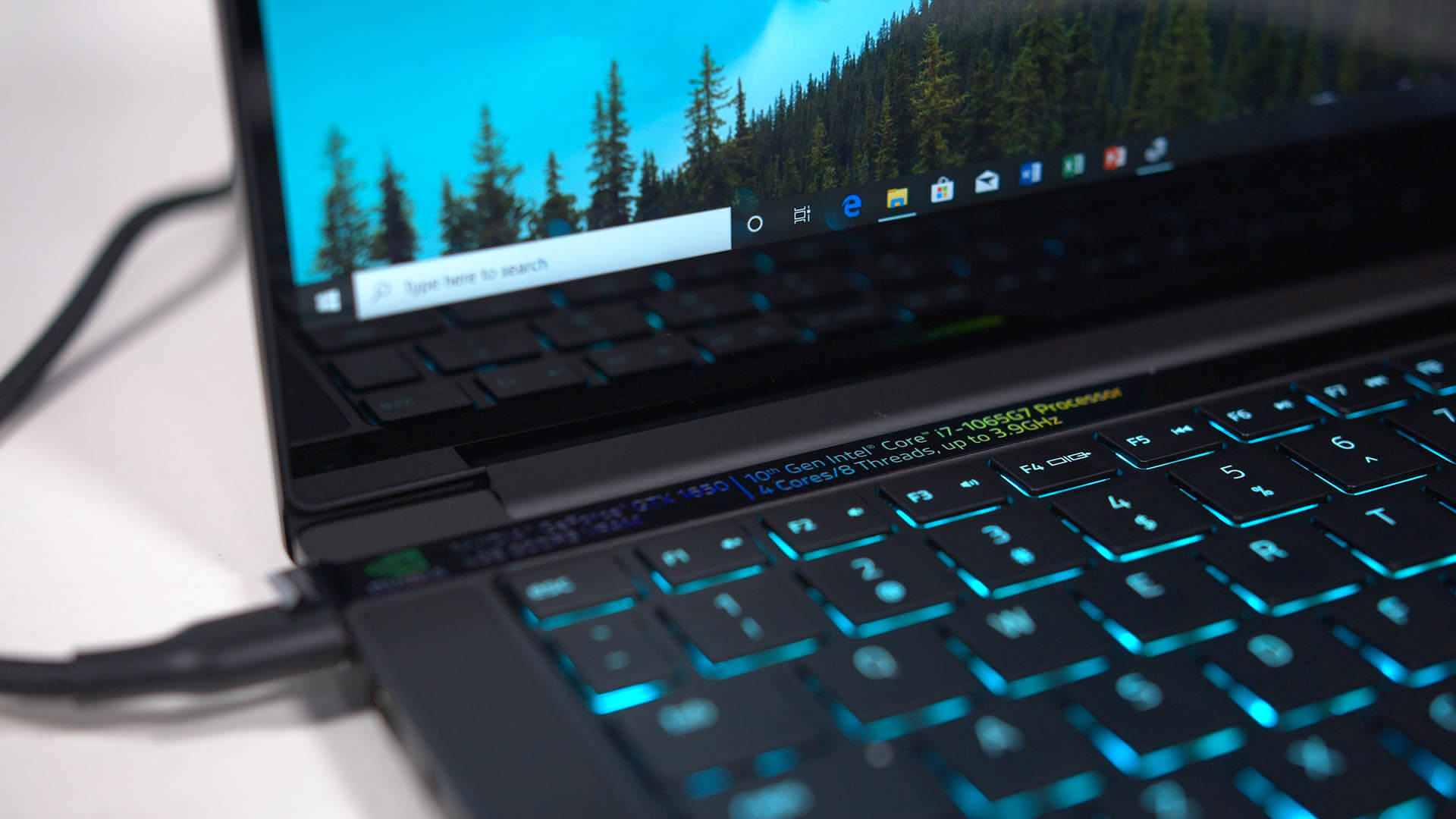
The Core i7-1065G7 delivers roughly equivalent multi-threaded CPU performance to the Core i5-10210U. So when comparing quad-cores on Intel'due south 10nm and 14nm nodes, basically nothing has been gained here. Single thread performance is somewhat higher, effectually the x percent mark, but this is starting time by the occasional slower multi-threaded result. In general, information technology'southward fair to say performance is about even.

And it's like comparing the Cadre i7-1065G7 to the Whiskey Lake Core i7-8565U. In that location are some larger than expected gains for workloads like MATLAB and Photoshop Iris Blur, simply in longer tests similar Handbrake, Ice Lake actually clocks in slower. On average, the i7-1065G7 is a few percent faster but it's not a mindblowing divergence and certainly in these CPU limited workloads, at that place'due south not much of a reason to upgrade from any of the eighth-generation parts or newer.

When you compare Ice Lake to the best Intel has to offer within 15W, the Core i7-10710U smokes the Core i7-1065G7 in multi-threaded workloads, so if you desire to use your ultraportable for anything intensive like video encoding, a Comet Lake six-cadre CPU is a better option. At the same fourth dimension, Water ice Lake is generally faster in single-threaded tests, and then it volition depend what sort of things y'all do with your laptop as to what processor makes more than sense.

The margins don't modify too much when comparing 25W configurations, more than power does equal more operation and in this example Ice Lake is about xx to 25 percent faster in its 25W fashion compared to 15W, but so is Comet Lake. If you were expecting to see notably better efficiency at these college ability targets, so far that doesn't seem to be the case on the mobile side.

On the other manus, Ice Lake is conspicuously much faster when y'all need GPU acceleration. In pure GPU limited situations, Water ice Lake's unlocked Gen 11 GPU is more than twice as fast as the crappy integrated GPU we've had from Skylake derivatives. And that's all within the same 15W power envelope. In a mixed workload like Premiere, that can pb to huge performance improvements.

Overall, our early impressions on Intel'south Water ice Lake processor are mixed. From testing the fastest 15W configuration available, at that place are some positive takeaways: faster single-thread performance, hugely improved GPU performance – but this is spoiled by issues in other areas.
Getting no improvement to multi-threaded operation is apropos for Intel'southward new 10nm node. Considering the CPUs we've tested take all been locked to 15W, getting no functioning gains from 10nm versus 14nm ways we're as well seeing no gains to efficiency. Ice Lake does appear to have much improved IPC, but this has been entirely commencement by the CPU running at lower clock speeds. Lower clock speeds, higher IPC, same ability, same performance.
This handily allows Comet Lake to swoop in, offering a six-core CPU in the aforementioned ability envelope, for significant gains to multi-threaded performance. Again, doesn't apply to single-thread applications where Ice Lake holds a atomic number 82, but for anything that loads up the CPU, Comet Lake is the way to get.
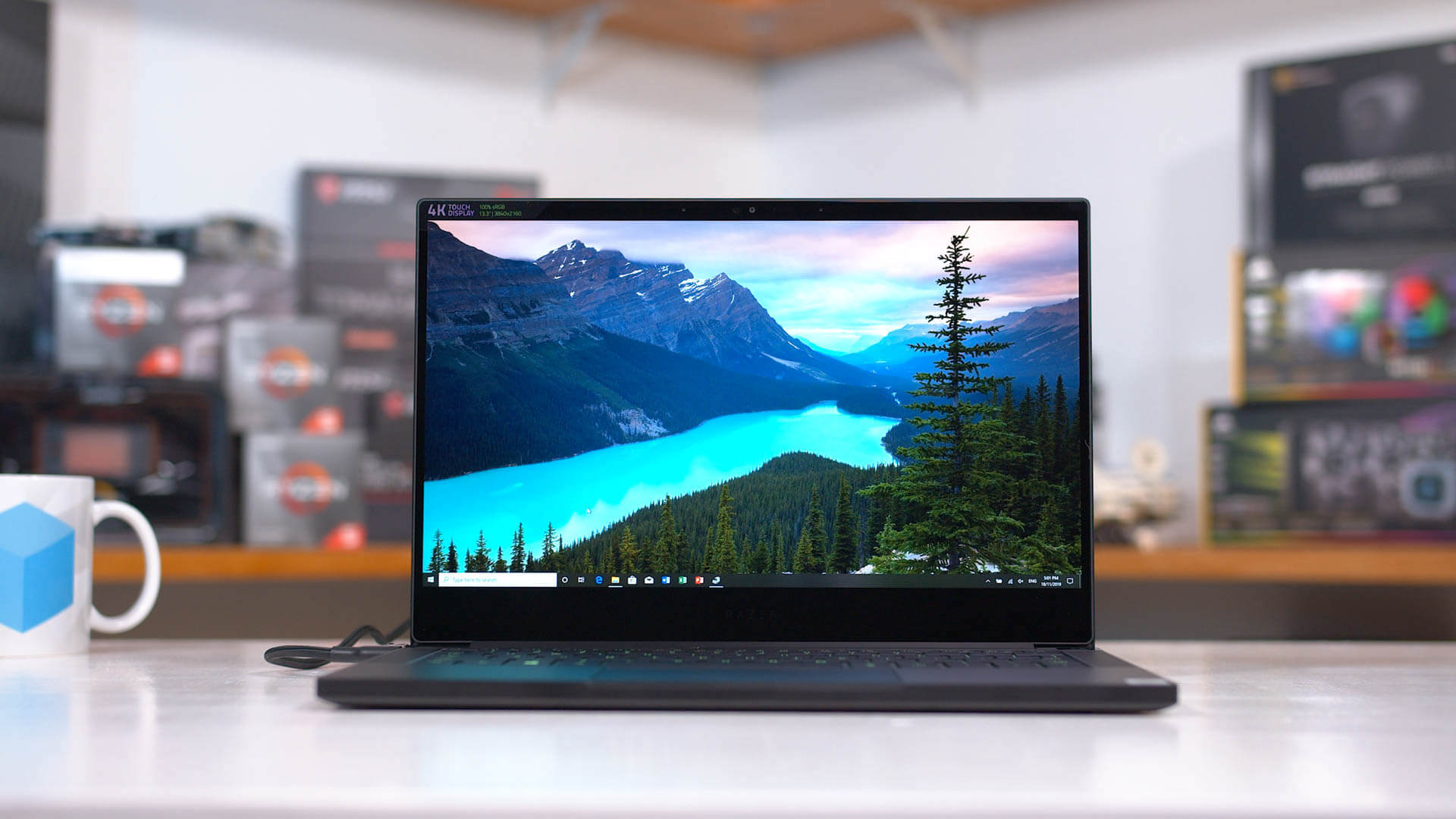
Granted, nosotros haven't done whatsoever battery life testing with this new platform as it's almost impossible to go a good apples-to-apples comparison, simply same performance at same power level shouldn't interpret to major improvements. If annihilation, gains will come up from other platform advantages like changes to the style power gating is handled, unlike boost technologies, more efficient memory then on.
Getting a much faster GPU with Water ice Lake is nice, but it's besides not a revolutionary upgrade given AMD has been offering this sort of performance since late 2022 with Ryzen Mobile. This is more near Intel bringing their part up to a competitive graphics standpoint. In some instances Ice Lake's 64 execution unit GPU still falls behind first-gen Ryzen Mobile, depending on the power limitations. Other times, it's faster, depending on how much memory bandwidth is required given Water ice Lake has a large advantage in that section.
Intel also has to compete with discrete GPU offerings, including Nvidia'southward popular MX150 and MX250, besides as newer, more powerful options like the GeForce GTX 1650 Max-Q that was included with our Razer Bract Stealth test system. Information technology depends heavily on the exact workload in question, but Ice Lake's integrated GPU isn't much faster than Comet Lake with an MX250, the exception to this rule being Premiere, where a combination of factors make Ice Lake a much amend choice.
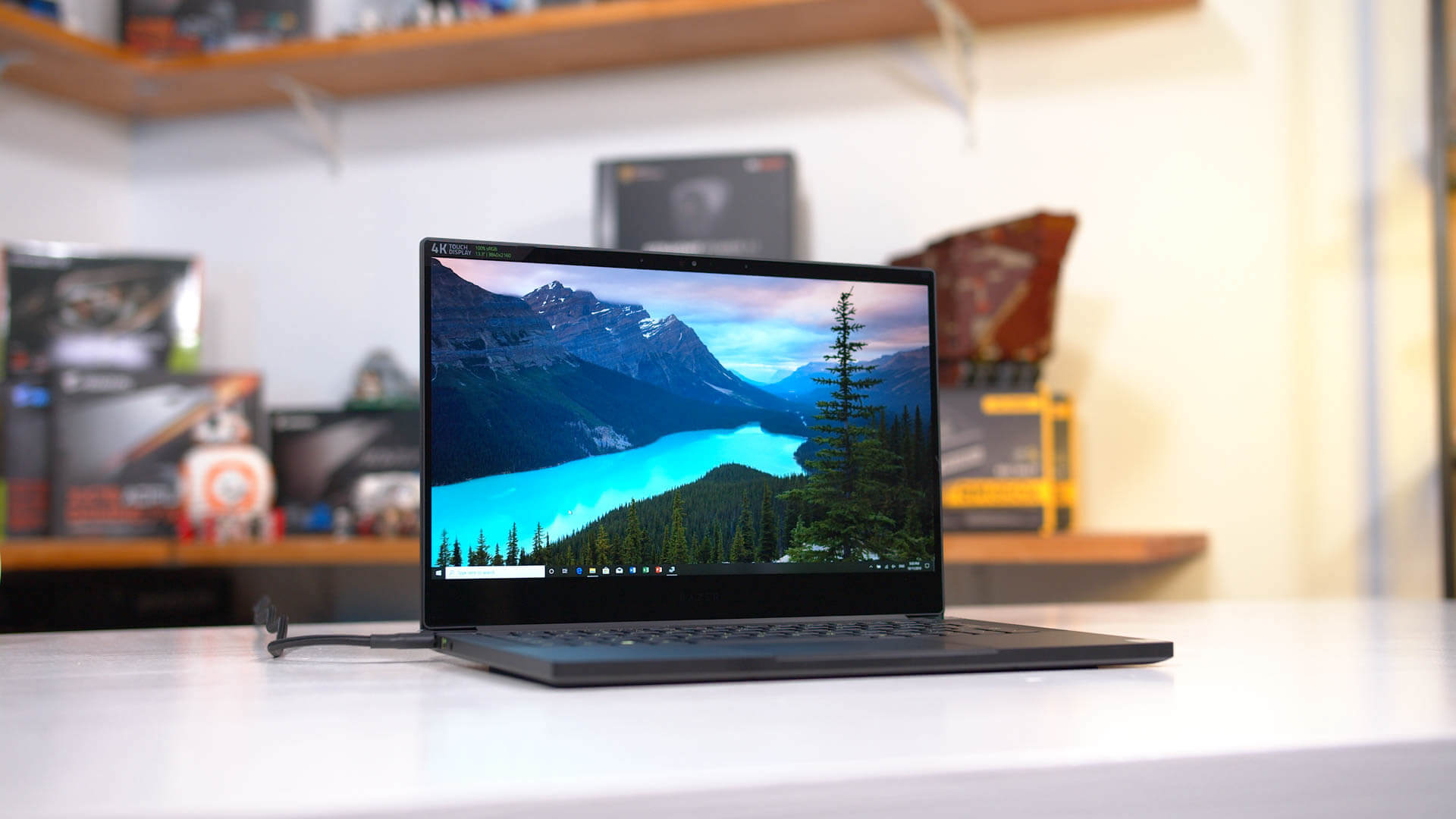
As it stands right now, the outright fastest hardware combination I've seen in ultraportable form factors appears to be Intel's Core i7-10710U paired with a GTX 1650 Max-Q, which y'all tin can arrive MSI's Prestige fourteen. If Razer, for instance, had swapped out the i7-1065G7 for a i7-10710U in this latest Bract Stealth, I suspect in almost workloads information technology would be superior, aside from some single-threaded border cases.
While it's neat that Ice Lake has a much improved integrated GPU, because it doesn't bring forwards CPU performance with it, we're not seeing improvements over what was already possible with 14nm. OEMs have been increasingly opting for detached GPUs in their ultraportables, and Ice Lake doesn't do much to improve over these configurations. If yous bought an 8th-gen laptop with an MX150, Ice Lake won't be much of an upgrade. Where you will encounter gains is in laptops that don't apply a detached GPU. If an OEM decides that they only want to include one chip, and then something like the Core i7-1065G7 is going to requite a big compute performance proceeds over say, an 8th-gen Core i7-8565U past itself.
Bottom line, it'due south a small showtime for Intel's 10nm series due to a lack of efficiency gains which probably has to practise with Intel's struggles at 10nm. It'southward possible that with a 10nm revision or just a full step forwards to 7nm, this volition better significantly. Meanwhile on the other side of the contend AMD is working hard on a next-gen Ryzen Mobile office on TSMC's 7nm.
Shopping Shortcuts
- Razer Blade Stealth on Amazon
- Core i7-1065G7 Laptops on Amazon
- Core i5-10210U Laptops on Amazon
- Core i7-10710U Laptops on Amazon
- Cadre i7-8565U Laptops on Amazon
- Core i7-10510U Laptops on Amazon
Further Reading
- Reasons to Upgrade Your Laptop (That Go Beyond a Functioning Upgrade)
- The Best Laptops 2022
- Desktop vs. Laptop Gaming with the RTX 2070
Source: https://www.techspot.com/review/1944-intel-core-i7-1065g7/
Posted by: logsdonprecand.blogspot.com


0 Response to "Intel Core i7-1065G7 Benchmarked: Ice Lake with Iris Plus Graphics"
Post a Comment